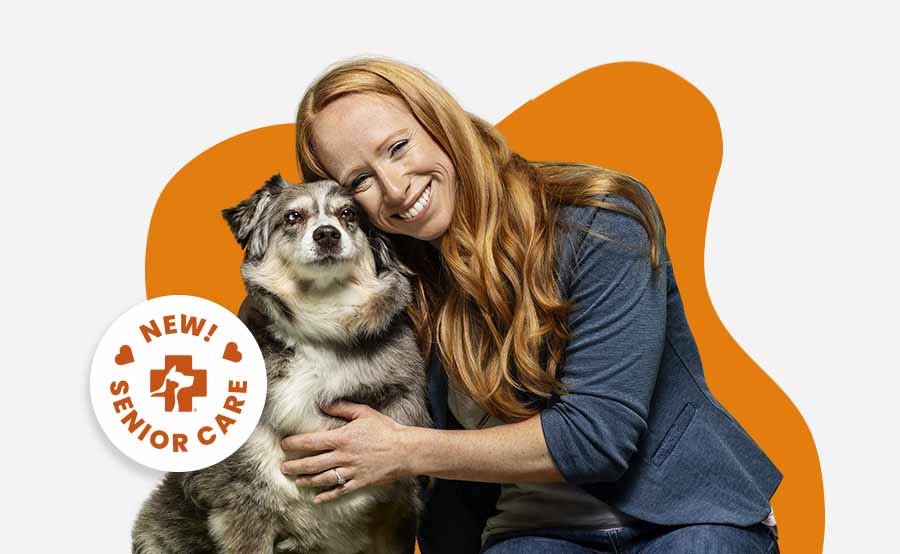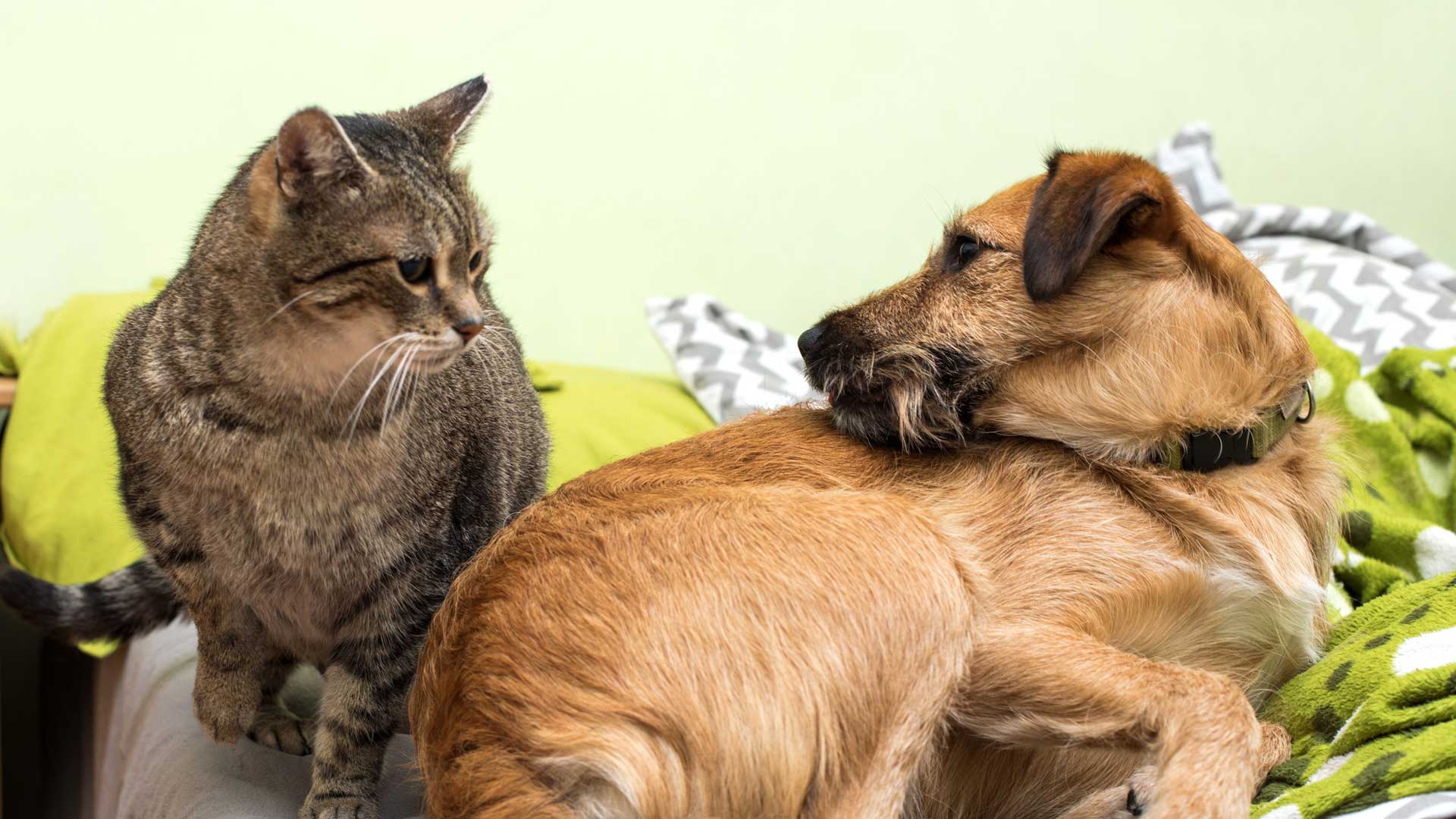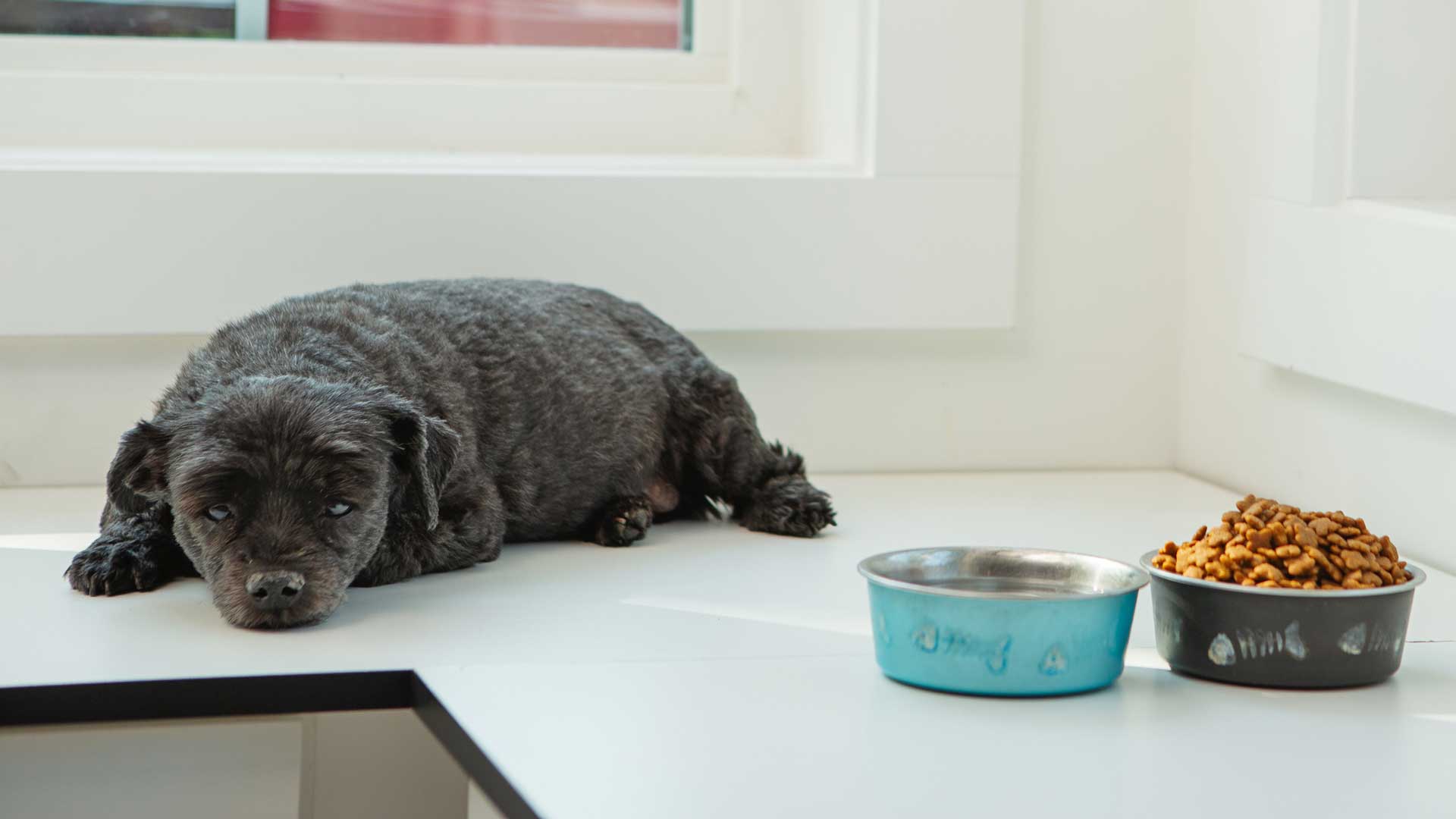cancer in older dogs and older cats
Cancer is unfortunately common in dogs and cats — especially senior dogs and cats.
We’ll take you through cancer signs and treatments and how to minimize your pet’s risk. While cancer can be impossible to prevent, early detection makes all the difference, and understanding your supportive care options can help your pet’s quality of life

Common types of cancer in dogs and cats
- Mammary cancer
- Lymphoma
- Mast cell tumor
- Oral cancer
- Osteosarcoma
- Hemangiosarcoma
- Transitional cell carcinoma

Symptoms of cancer in dogs and cats
- Lethargy
- Difficulty eating, swallowing, or breathing
- Lumps, bumps, or discolored skin
- Sores that don’t heal
- Persistent diarrhea or vomiting
- Decreased appetite
- Weight loss
- Pain or discomfort
An overview on cancer in senior dogs and cats
Unfortunately, cancer is currently the main cause of death in senior dogs and cats. Cats are considered seniors around age 10. Small and medium dogs hit their senior years around ages 8–11. Large and giant breed dogs become seniors between 6–8 years old. Cancer symptoms like weight loss or lethargy may initially seem like normal aging, so it’s important to stay vigilant on subtle changes. You know your pet best.

Neoplasm vs. cancer
An abnormal, uncontrolled growth inside the body is called a neoplasm or tumor. This can be benign (noncancerous) or malignant (cancerous). A vet will typically diagnose a neoplasm based on a pet’s physical exam and medical history, although a definitive diagnosis requires a biopsy and histologic exam by an outside laboratory. Additional tests like X-rays or blood tests may also be necessary.
Common types of cancer in dogs and cats
Many types of cancers seen in pets are also seen in humans. These are some of the most common cancers in senior dogs and cats:
- Lymphoma:
Lymphoma starts in the lymphatic system and is common in both dogs and cats. It's essentially when white blood cells grow abnormally, and there are multiple specific types of it.
- Mast cell tumor:
Mast cells are involved with allergens and inflammation. A mast cell tumor is the most common skin tumor seen in dogs. Its appearance can vary greatly — from a small, slow-growing lump to aggressive patches of abnormal skin.
- Oral cancer:
Oral cancer is becoming increasingly more common in senior dogs and cats. Types include squamous cell carcinoma and melanoma. These are often treated with surgery.
- Mammary cancer:
Mammary cancer often affects pets who haven’t been spayed or were spayed in adulthood. Common signs include swelling, lumps, and/or discharge in the mammary glands.
- Osteosarcoma:
A super aggressive bone cancer, osteosarcoma is most often seen in large breed dogs. This type of cancer can metastasize (spread) quickly, so it’s important to see your vet if you notice your pet experiencing issues walking or avoiding exercise.
- Hemangiosarcoma:
An aggressive cancer of the blood vessels, hemangiosarcoma usually attacks the heart, spleen, and skin. Early detection and treatment are essential, so see your vet immediately if your pet collapses, appears weak, or has abdominal swelling. It’s not uncommon for a hemangiosarcoma to go undiagnosed until after it's a life-threatening issue.
- Transitional cell carcinoma:
Transitional cell carcinoma is most seen in older dogs. It affects the bladder and typically causes incontinence, blood in urine, or frequent urination.
How to spot cancer in your senior pet
Cancer in senior dogs and cats can present as a wide variety of symptoms — or, unfortunately, none. That's why preventive care is paramount. Regular comprehensive exams with your vet can help detect changes that you might miss in your day-to-day life.
Cancer symptoms in older dogs and cats
While no two pets’ cancer journeys look the same, there are some common symptoms to look out for. These include:
- Lethargy
- Difficulty eating, swallowing, or breathing
- Lumps, bumps, or discolored skin
- Sores that don’t heal
- Persistent diarrhea or vomiting
- Decreased appetite
- Weight loss
- Pain or discomfort
These symptoms can also be indicative of several other issues or illnesses. It’s important to talk to your vet at the first signs of distress or symptoms, because the earlier an issue is diagnosed, the better prognosis.
What causes cancer in senior cats and dogs?
Here’s where it gets tricky: the cause of most cancers in cats and dogs is unknown. Senior pets have a higher risk of cancer because of accumulated environmental exposure to toxins, age-related immune decline, and genetic predispositions. However, there are some things you can do to help reduce the risk of certain types. Spaying can help reduce the risk of mammary cancer, and neutering can help reduce the risk of testicular cancer.
There are also certain types of cancer that are more prevalent in certain dog breeds. For example, melanoma is often seen in Doberman Pinschers, Schnauzers, Chow Chows, and Scottish Terriers.
Talk to your vet if you have questions about spaying/neutering or predispositions based on your pet’s breed.
Diagnosis, staging, and treatment options
If your vet suspects cancer based on your pet’s physical exam and medical history, they will typically do a biopsy or fine-needle aspiration to confirm. Once confirmed that the neoplasm is malignant, they will do a thorough workup to determine the type of cancer and location as well as if it’s spread. This usually involves extensive imaging (CT scan, MRI, or ultrasound) and blood work.
From there, your vet will assign the cancer a stage. This staging number describes the extent of cancer in the body and helps dictate your pet’s treatment and prognosis.

Seeing a veterinary oncologist
A cancer diagnosis for your pet can be difficult and complex. A veterinary oncologist is a specialist who can help guide the entire process. They have access to specialized equipment and extensive experience with cancer medications and their side effects.

Chemotherapy for senior dogs and cats
Chemotherapy uses chemical agents to kill cancer cells. It’s typically given through injection but is sometimes administered in pill form.
Similar to humans, dogs and cats can receive chemotherapy to treat their cancer. However, since pets aren’t capable of understanding cancer treatment, the goal is to minimize all side effects. For example, a dog or cat going through chemotherapy doesn’t usually lose fur or become nauseous like humans do.

Other treatment options for cancer
There are a variety of available treatments in addition to chemotherapy. Surgical removal is often a first-line treatment for cancer in dogs and cats. Other options include radiation therapy, immunotherapy, and cryosurgery (freezing). Plus, there are pain management medications, antinausea medications, and therapeutic diets to help treat symptoms.
The type of treatment your vet recommends will depend on your pet’s type of cancer, medical history, and current quality of life.

Cancer and quality of life
Dealing with a cancer diagnosis is never easy, and it can be incredibly challenging making decisions on treatment for your dog or cat.
One tool, a quality-of-life scale, can be helpful when making these decisions. A quality-of-life scale is a form of objective journaling. You record your observations to see if your pet’s symptoms are improving or declining. It can help you and your vet evaluate your pet’s condition and create a baseline for their healthcare needs. Download our charting worksheet here
Custom care that grows with your pet
You can save more than 30% by bundling your pet’s preventive care with an Optimum Wellness Plan. On top of comprehensive exams, vaccinations, and diagnostic testing, these convenient packages also include unlimited office visits, 24/7 Pet Chat™, discounts on most Banfield products, and more.
Our NEW Senior Care Optimum Wellness Plan includes our most in-depth diagnostic testing yet. This helps us detect changes in organ function and overall physical health, so that we can begin any recommended treatment as soon as possible.

Senior Care
Designed to help detect early signs of age-related illness
This plan combines essential services like vaccinations and exams with in-depth diagnostic testing.
See what’s included in Senior CareSenior Care Plus
Designed to help detect early signs of age-related illness and support additional dental needs
This plan includes all the services in our Senior Care plan plus a dental cleaning.
See what’s included in Senior Care Plus Mites and mange
Mites and mange Podcast - Not Just Fluff
Podcast - Not Just Fluff





